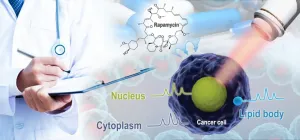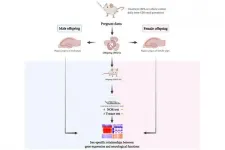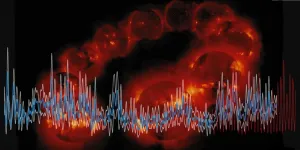Automakers delay recalls to minimize stock penalties, avoid being the first safety issue in news
2021-01-19
(Press-News.org) Whether consciously or unconsciously, automotive firms time their product recalls to minimize stock price penalties, resulting in unnecessary delays and clusters of subsequent recalls by other companies, according to new research from the University of Notre Dame.
An initial recall by one firm prompts clusters of additional recalls in close proximity by competitor firms, according to "Hiding in the Herd: The Product Recall Clustering Phenomenon," forthcoming in Manufacturing and Service Operations Management from Kaitlin Wowak, assistant professor of IT, analytics, and operations at Notre Dame's Mendoza College of Business.
According to the study, "Automobile recalls seem to be announced after inexplicable delays. Toyota's unintended acceleration recall and General Motors' (GM) ignition switch recall are two noteworthy examples, which were associated with 37 and 124 deaths, respectively. In both cases, consumers' lives were put at risk while firms hesitated to announce a recall, even after they were aware of the serious product defects. This study offers one potential explanation for recall delays: recall clustering."
The researchers analyzed 3,117 auto recalls over a 48-year period (1966-2013) using a model to investigate recall clustering, while categorizing recalls as leading or following within a cluster.
"We show that 73 percent of announced recalls within those 48 years occurred in clusters," Wowak said. "On average, a recall cluster forms after a 16-day gap in which no recalls are announced. Clusters persist for 34 days and consist of 7.6 following recalls."
The study states, "On August 21, 2017, Ford announced a recall due to leaky fuel tank valves, which was quickly followed in the subsequent days by a fuel tank recall from Honda and an oil hose recall from Chrysler. Similar groupings of recall announcements by competitors in close temporal proximity have been covered extensively by the popular press. This suggests that recall announcements may not be triggered solely by individual firms' product quality defect awareness, but may also be influenced by competitor recalls, a phenomenon that to our knowledge no prior research has investigated."
The team also found significant stock penalties associated with being the first to recall.
"Leading recalls are associated with as high as a 67 percent larger stock market penalty than following recalls," Wowak explained. "The market penalty for a following recall shortly after the leading recall is less than the market penalty for a following recall towards the end of the cluster. And the stock market penalty faced by a leading recall grows as the time since the end of the last cluster increases. That is, as the time between the last following recall of one cluster and the leading recall of the subsequent cluster increases, so too does the market penalty for the leading recall of the subsequent cluster."
The study examined how the National Highway Traffic Safety Administration (NHTSA) manages recalls compared to another major U.S. regulatory agency that oversees recalls, the Food and Drug Administration (FDA). The researchers obtained FDA recall data for drug and medical devices from 2003 to 2012 that included a mandatory, firm-provided defect awareness date along with a recall initiation date, which allows the FDA to measure the actual time to recall, making it harder for firms to delay a recall decision.
"The NHTSA does not require firms to provide defect awareness dates," Wowak said. "However, requiring auto firms to report the date that they first became aware of a defect may discourage them from hiding in the herd and prompt them to make more timely and transparent recall decisions, reducing the prevalence of clustering, which creates unnecessary delays in removing harmful products from the market."
INFORMATION:
Co-authors of the study include Ujjal Mukherjee, University of Illinois; George Ball, Indiana University; Karthik Natarajan, University of Minnesota; and Jason Miller, Michigan State University.
ELSE PRESS RELEASES FROM THIS DATE:
2021-01-19
Nearly 78 per cent of children with autism have at least one mental health condition and nearly half have two mental health conditions or more, according to a new U.S. study from the University of British Columbia's department of psychology and the AJ Drexel Autism Institute at Drexel University (Pennsylvania).
The study also found mental health conditions present in 44.8 per cent of pre-school age children with autism. The scope of the issue among that age group had not previously been established using a large, population-based sample.
By contrast, the study found that only 14.1 per cent of youth without autism (ages 3-17) had mental health conditions.
It is the first research since 2008 to examine the prevalence of mental health conditions among children with autism at a population ...
2021-01-19
Malta, a sovereign microstate in the middle of the Mediterranean Sea, has no shortage of sunny beaches, honey-bricked villages and rugged countryside. Beyond its Mediterranean charm, Malta is home to a geographically and culturally isolated population whose unique genetic makeup, makes this island nation a goldmine for genetics research.
Four years ago, the University of Malta set up a national ALS Registry and Biobank to identify patients with amyotrophic lateral sclerosis (ALS) and collect data on their residence, occupation, lifestyle and environmental exposures. Blood samples ...
2021-01-19
With the global student community taking online courses as a result of the anti-Covid-19 measures, a study led by the University of Geneva (UNIGE) reveals that online courses deepen inequalities between gifted and less gifted students by 5%. The results of the study, which was based on data collected in 2016-2017 prior to the anti-Covid lockdown initiatives, are published in the Journal of the European Economic Association. They indicate that this learning gap between different student profiles is mainly due to their behaviour and motivation. The study gives higher education establishments worldwide practical ways to deal with lockdown or the chronic lack of space in lecture theatres, including via co-educational ...
2021-01-19
Cancer cells are smart when it comes to anti-cancer drugs, evolving and becoming resistant to even the strongest chemotherapies over time. To combat this evasive behavior, researchers have developed a method named D2O-probed CANcer Susceptibility Test Ramanometry (D2O-CANST-R) to see, at single-cell/organelle level, how pharmaceuticals induce cancer cell death and how cancer cells adapt.
The research, conducted by the Qingdao Institute of Bioenergy and Bioprocess Technology (QIBEBT) of the Chinese Academy of Sciences (CAS), was published on Jan. 12 in Analytical Chemistry, ...
2021-01-19
A new study by researchers from Chulalongkorn University, Tohoku University, and The George Washington University is the first to identify autism candidate genes that may be responsible for the sex-specific effects of bisphenol A (BPA) on the brain. It suggests BPA may serve as an environmental factor that contributes to the prevalence of male bias in autism spectrum disorder (ASD).
The research was published in the journal Scientific Reports.
BPA is widely used in many products in our daily life and abundant in micro/nanoplastics found in the environment, ...
2021-01-19
Summary
Ultra-small nanomedicines of approximately 18 nm were fabricated by dynamic ion-pairing between Y-shaped block copolymers and nucleic acid drugs, such as siRNA and antisense drugs.
Chemically modified and double-stranded oligonucleotides dramatically enhanced the stability of the ultra-small nanomedicines in the blood circulation.
The ultra-small size allows for high permeability in cancer tissues by slipping through the cracks in tumor vasculatures and stromal tissues.
Clinical trials and preclinical studies using the developed ultra-small nanomedicines are proceeding for cancer therapy.
Published in the website of Journal of Controlled Release on January 6.
https://doi.org/10.1016/j.jconrel.2021.01.001
Main body
January 19, 2021 - Kawasaki in ...
2021-01-19
The survival of pesky little flies in showers and other wet areas around the house, impervious to water droplets that may be larger than they are, comes down to more than quick reflexes. The insects have evolved a unique coating of hairs that allows them to shrug off water droplets of almost any size, KAUST researchers have shown.
Sigurdur Thoroddsen, who leads the high-speed fluids imaging laboratory at KAUST, couldn't help but take a professional interest in the small drain flies that made a home in his shower and never seemed to wash away. Thoroddsen's research focuses on multiphase flow and dynamics at air-liquid interfaces -- an environment where drain flies have found a niche, despite some risky physics.
Insects are so small that the surface tension of ...
2021-01-19
What goes on in the sun can only be observed indirectly. Sunspots, for instance, reveal the degree of solar activity - the more sunspots are visible on the surface of the sun, the more active is our central star deep inside. Even though sunspots have been known since antiquity, they have only been documented in detail since the invention of the telescope around 400 years ago. Thanks to that, we now know that the number of spots varies in regular eleven-year cycles and that, moreover, there are long-lasting periods of strong and weak solar activity, which is also reflected in the climate on Earth.
However, how solar activity developed before the start of systematic records has so far been ...
2021-01-19
Every year around 734 million tons of wheat straw are produced worldwide, a large amount of waste, which is cheap and has had no well-defined use until now. Recently, the RNM-271 Chemical Engineering and FQM-383 NANOVAL Organic Chemistry research groups at the University of Córdoba have been able to give a new use to this agricultural excess material, by using it as the foundation in order to manufacture polyurethane foams.
Also known as foam rubber, this plastic material, often manufactured from petroleum by-products, is extremely versatile within the industry and has multiple uses in the construction and automobile sectors as a sealant as well as ...
2021-01-19
An international consortium of scientists, initiated by Reinhard Kienberger, Professor of Laser and X-ray Physics at the Technical University of Munich (TUM), several years ago, has made significant measurements in the femtosecond range at the U.S. Stanford Linear Accelerator Center (SLAC).
However, on these miniscule timescales, it is extremely difficult to synchronize the X-ray pulse that sparks a reaction in the sample on the one hand and the laser pulse which 'observes' it on the other. This problem is called timing jitter, and it is a major hurdle in ongoing ...
LAST 30 PRESS RELEASES:
[Press-News.org] Automakers delay recalls to minimize stock penalties, avoid being the first safety issue in news




